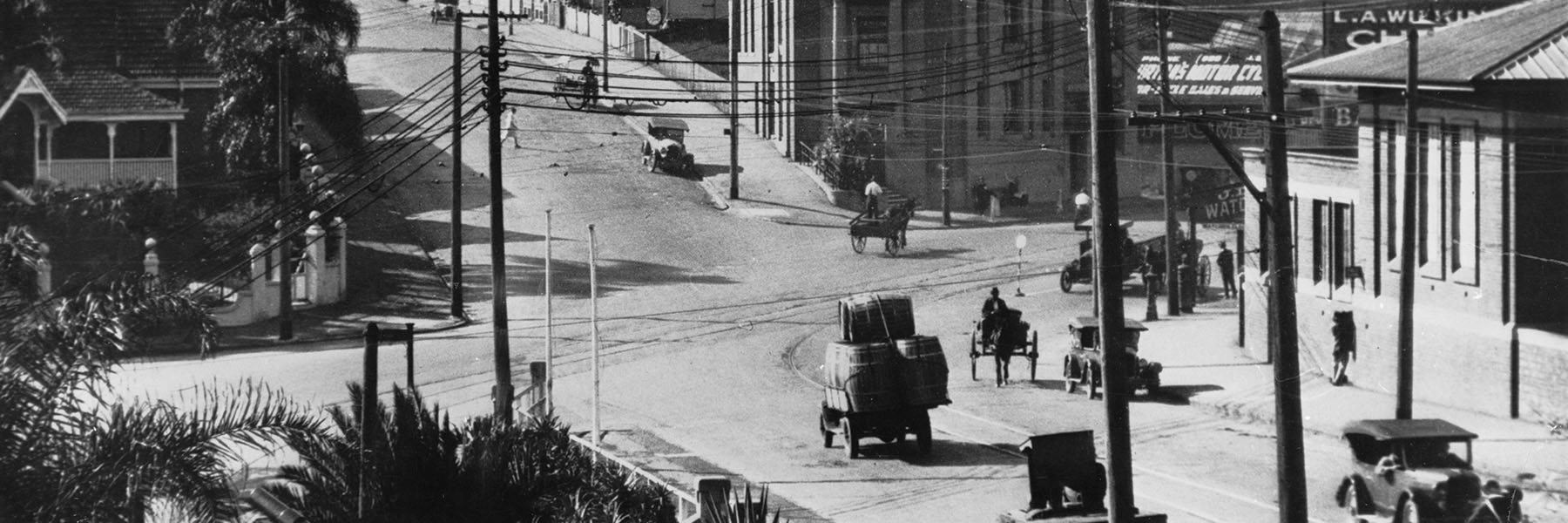
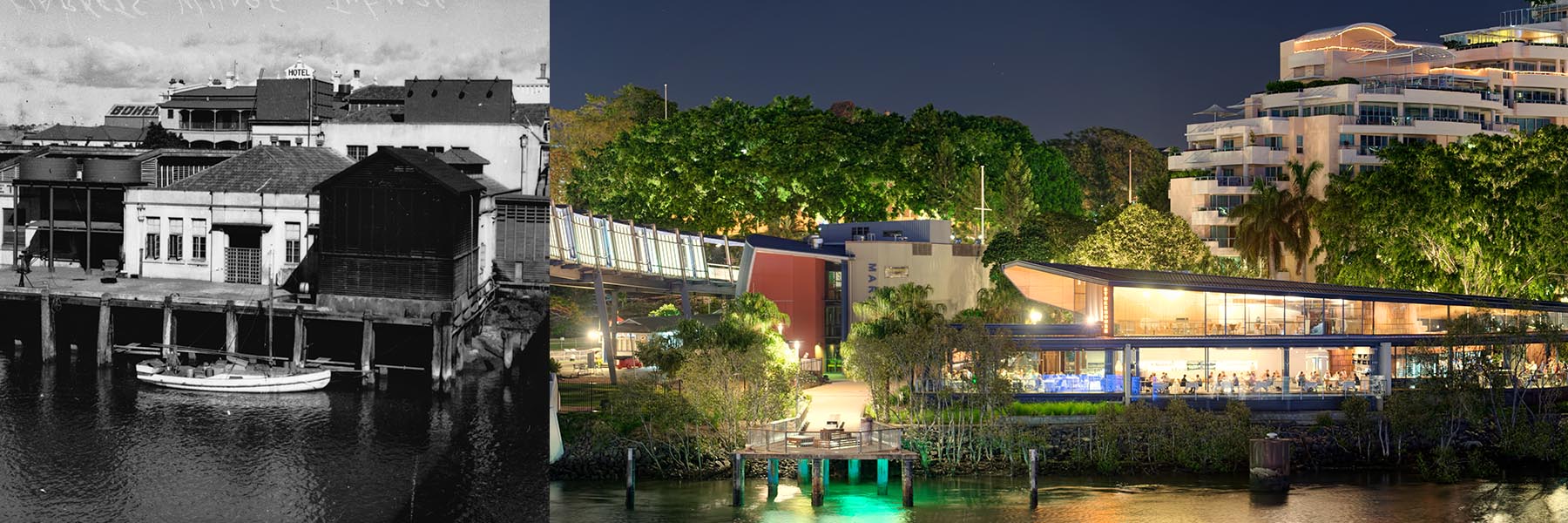
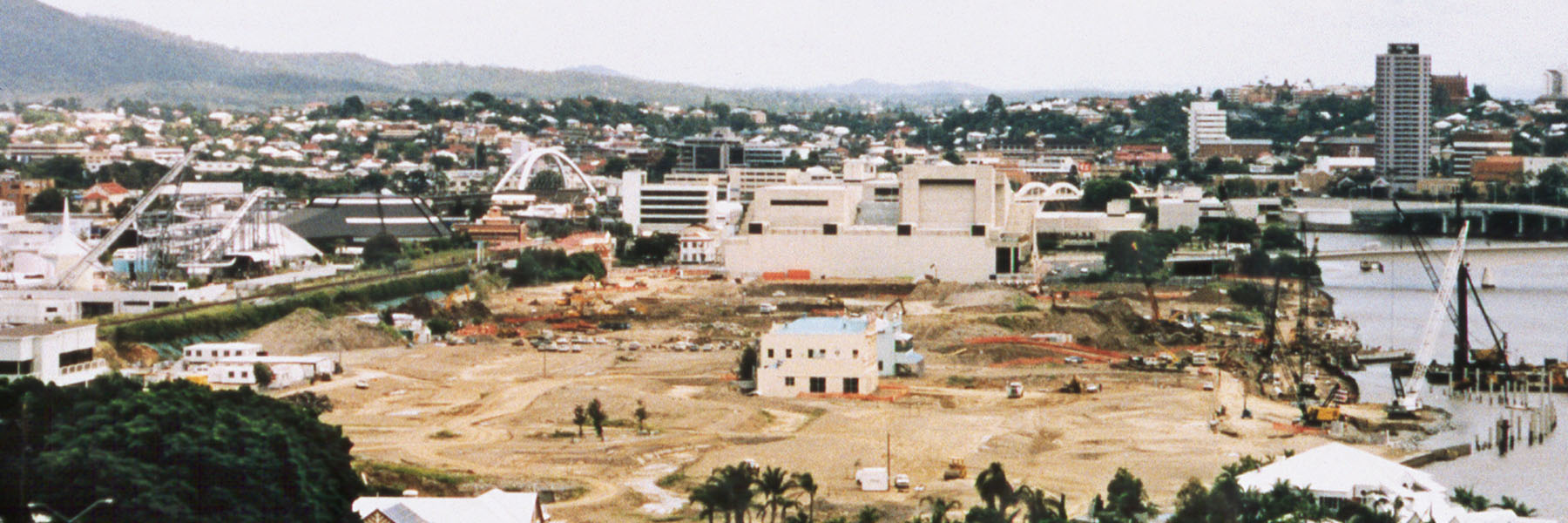
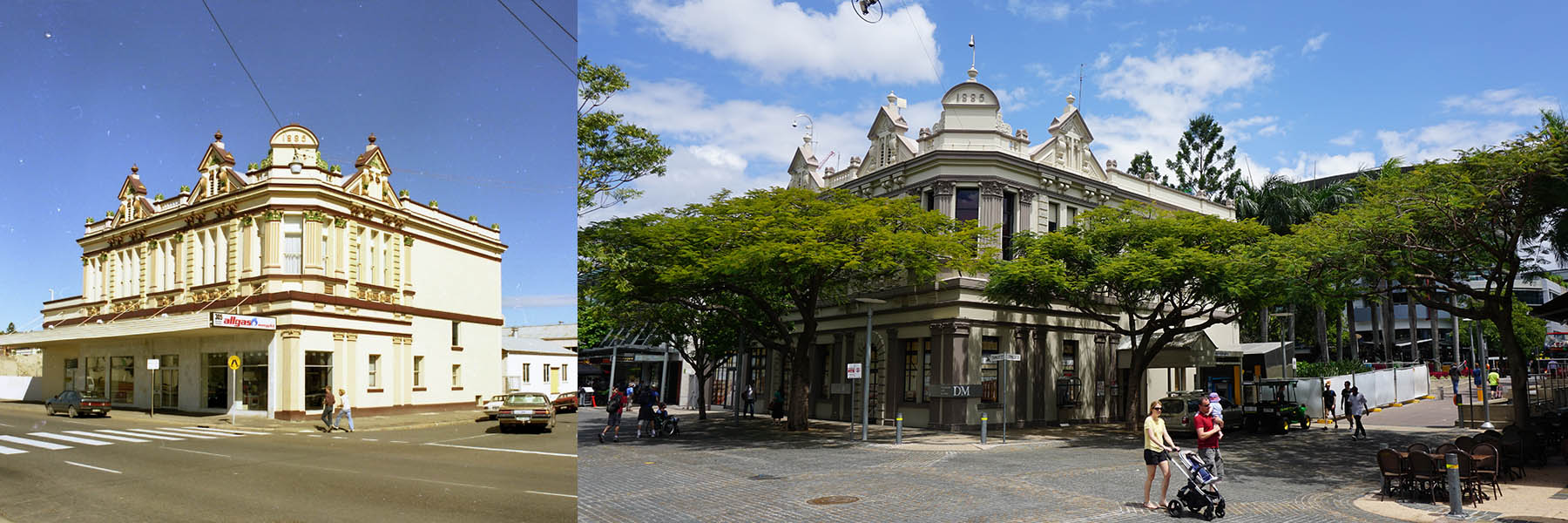
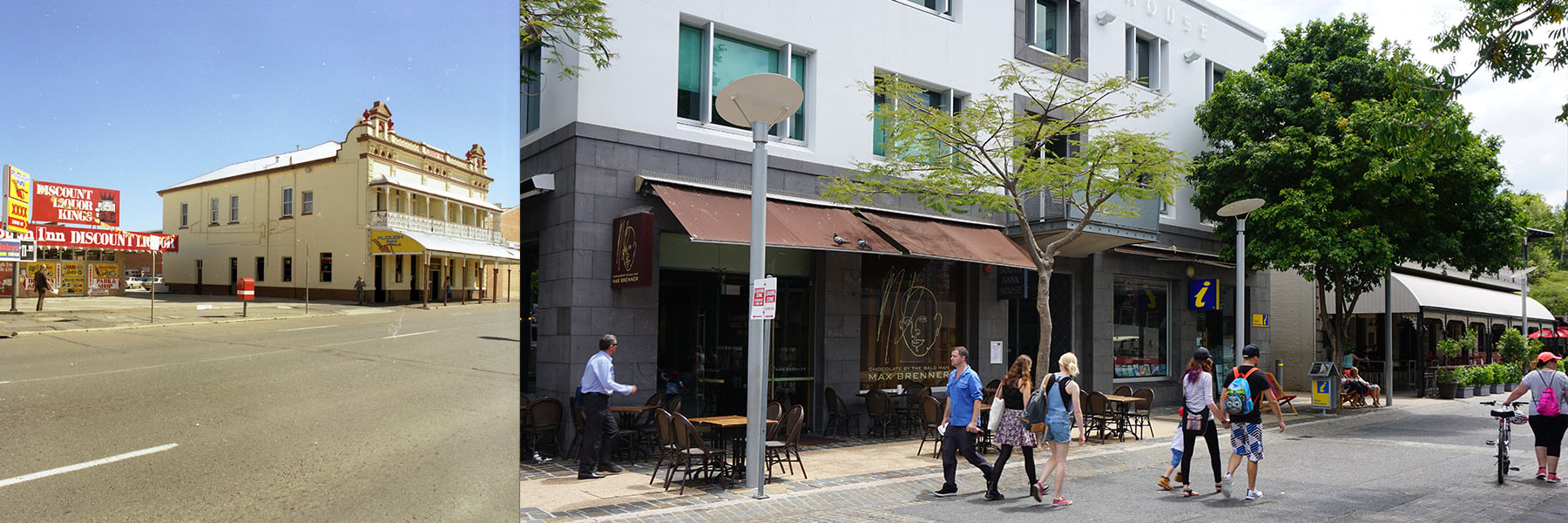
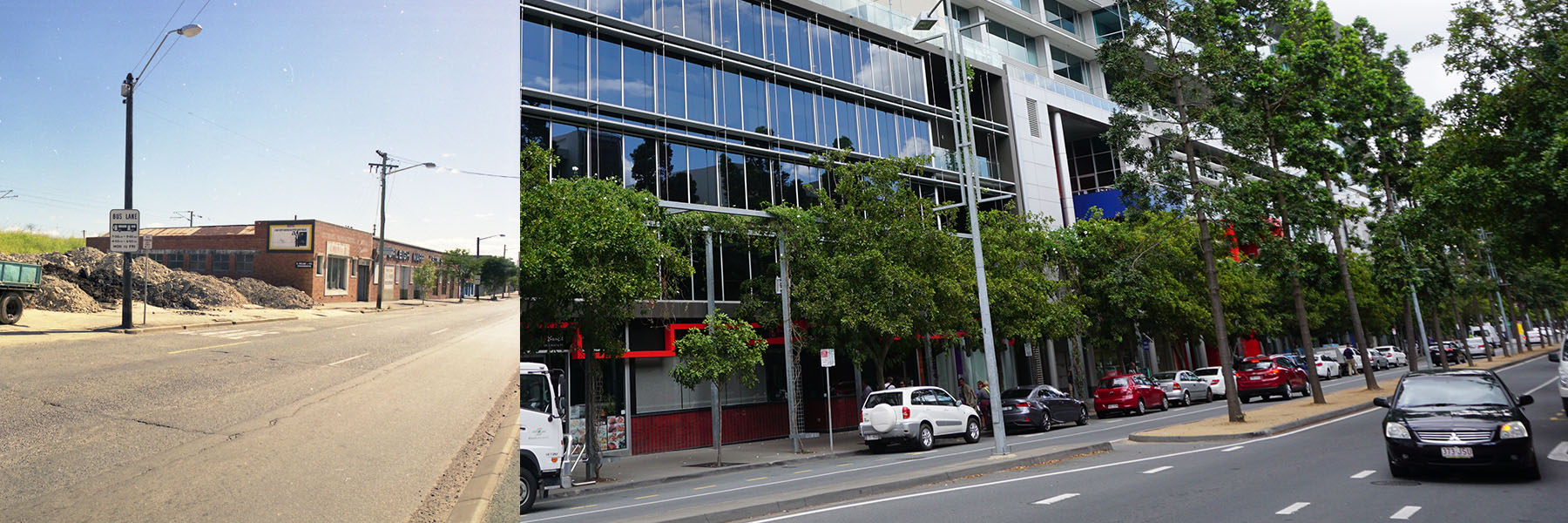
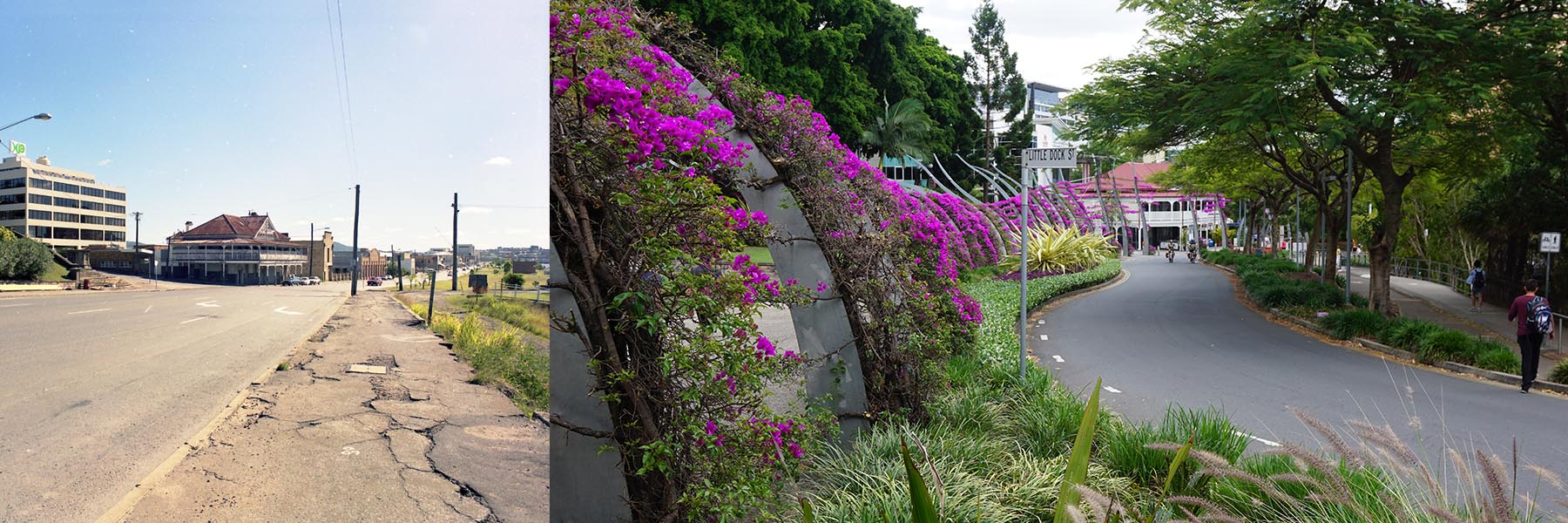
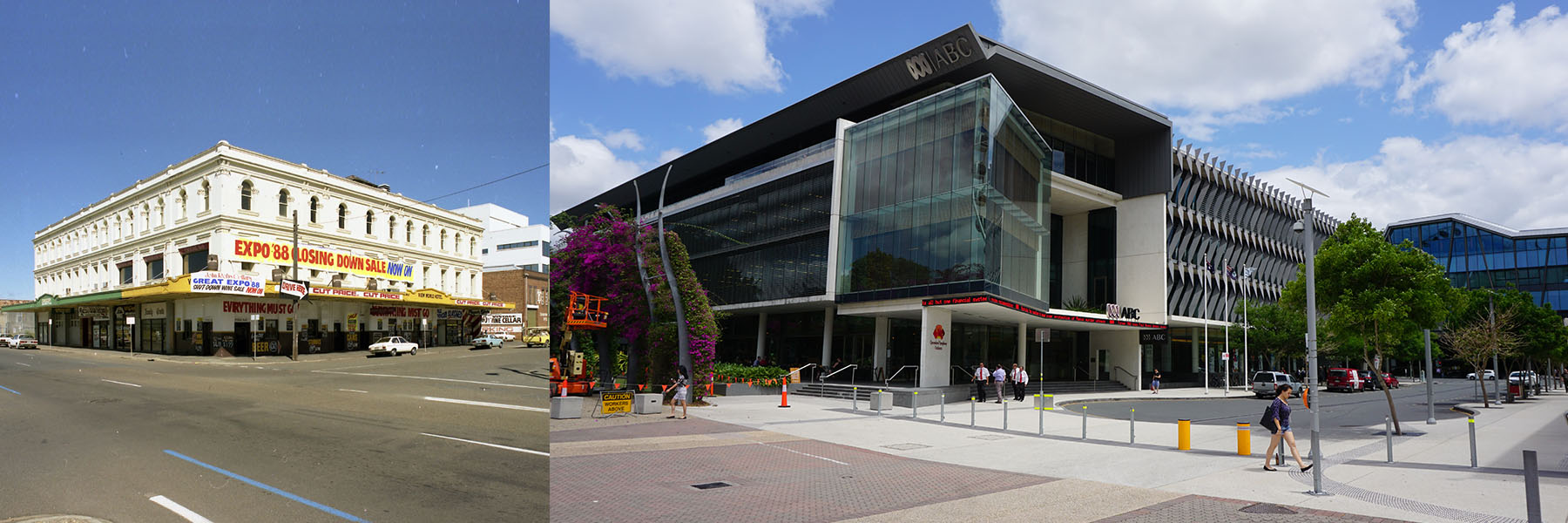
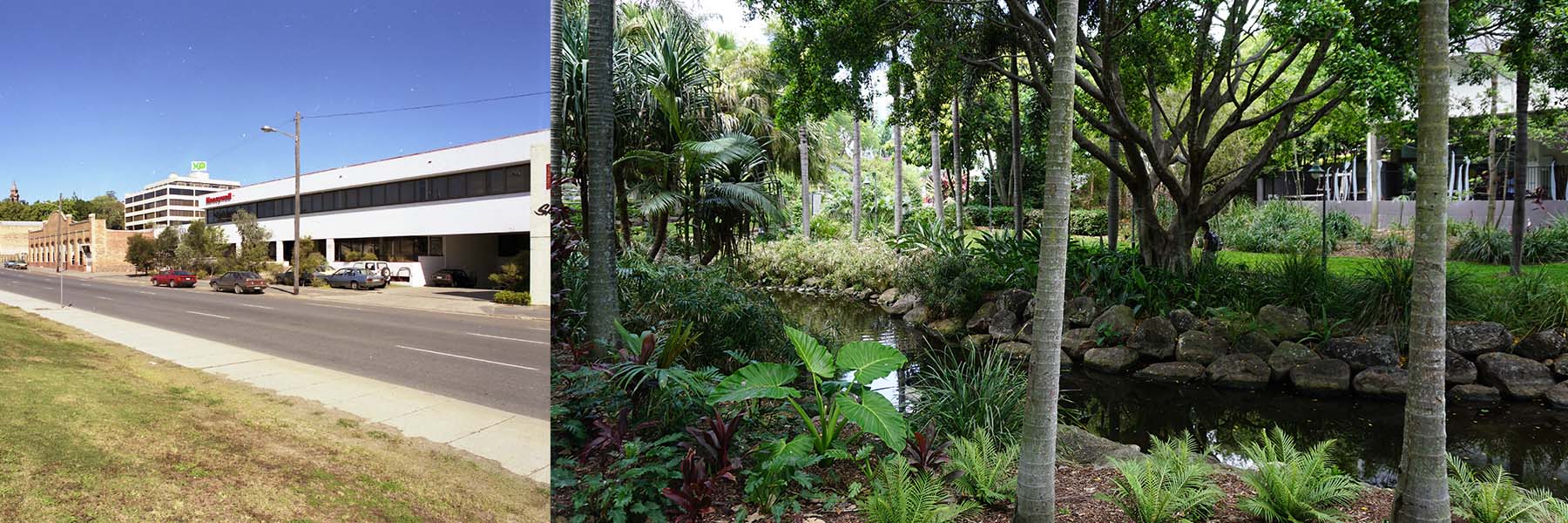
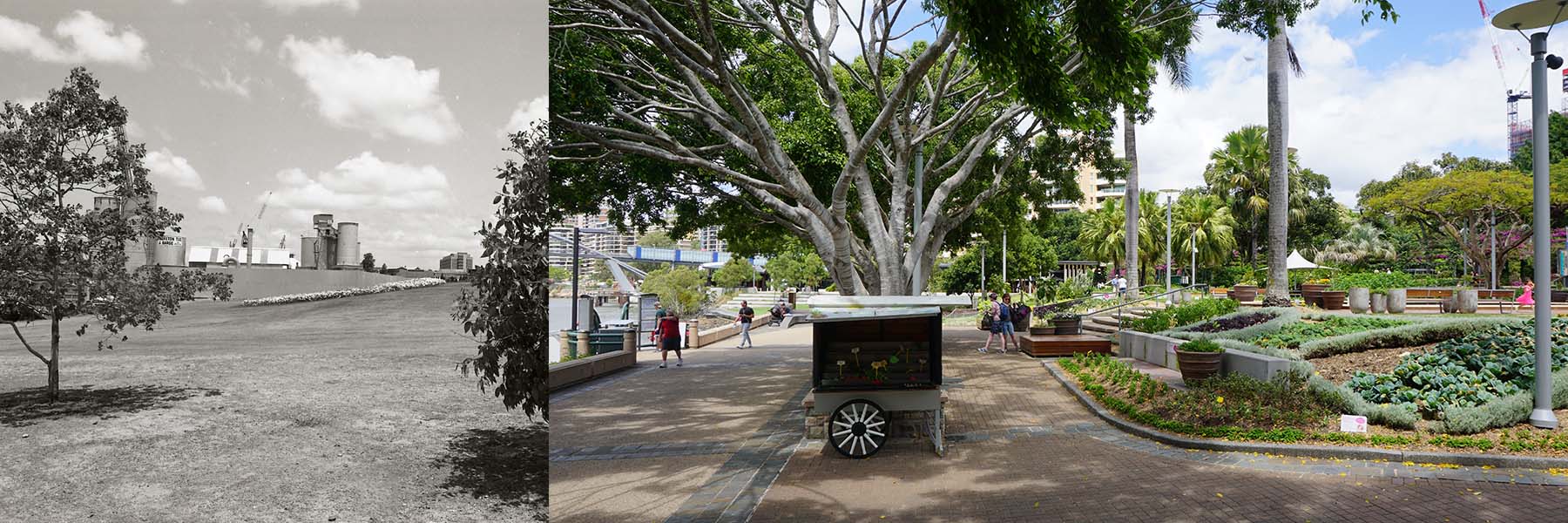
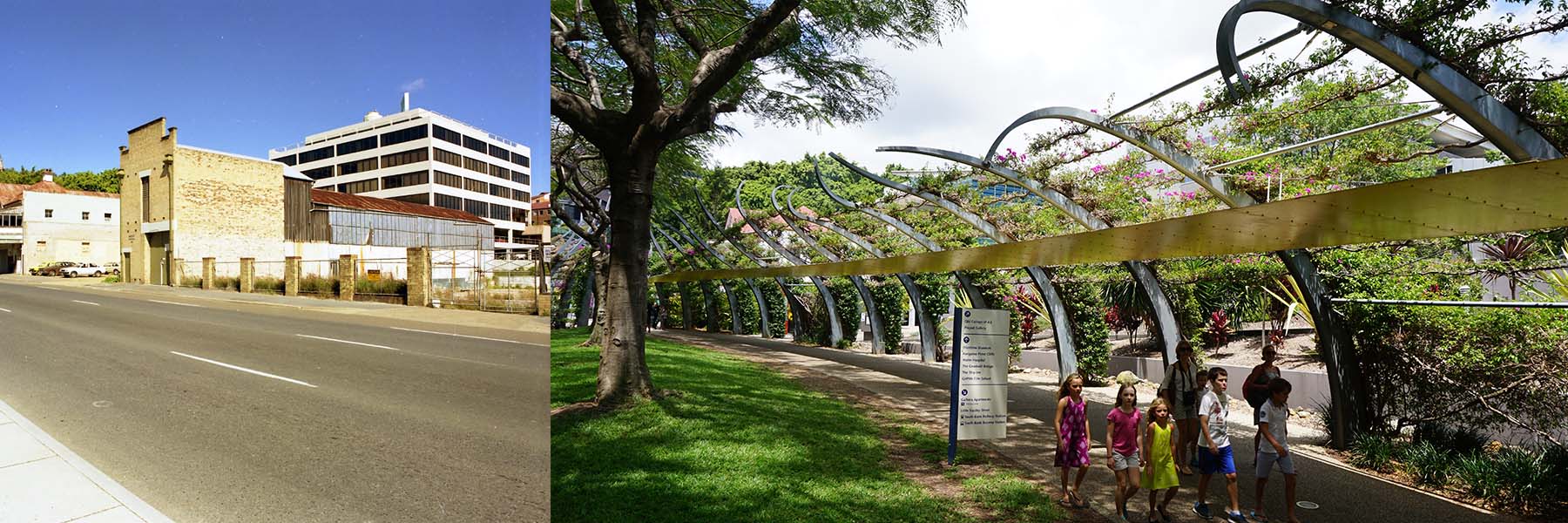
We live in an age of increasingly rapid change. Our aim is to not just keep pace with this change but to help lead it.
South Bank is one of the most dynamic parts of Brisbane and has been a significant place in the history of Brisbane for tens of thousands of years. It has a rich and diverse First Nations and European history from early times to modern day.
There are a number of prominent events and dates of South Bank's story and the Corporation's history which are included below.
Historical images supplied by State Library of Queensland and Brisbane City Council.
South Brisbane was originally a meeting place for traditional landowners, the Turrbal and Yuggera people.
The Yuggera nation encompassed a vast region south west of Brisbane, which included Ipswich.
The Turrbal people primarily occupied areas to the north along the Brisbane River including what is now known as Coronation Drive.
The region of South Brisbane including Musgrave Park, is culturally significant to indigenous Australians and was frequently used as meeting places for visiting peoples from the north and south of the Brisbane River. Historical reports documented in 1950 from tribal elder, William MacKenzie, born in 1873, state that he spoke of many regional ceremonies including marriage and trade ceremonies taking place in South Brisbane and Musgrave Park.
South Bank Corporation recognises the Turrbal and Yuggera people as the traditional owners of the lands at South Bank.
The early 1840s saw it become the central focus point of early European settlement.
From 1850, the South Bank Precinct quickly established itself as the business heart of the fledgling city of Brisbane. Following the 1893 floods the central business district was relocated to higher ground on the north side of the river.
By 1930, South Bank had established itself as a bustling river port and industrial zone that was buzzing with markets, wharves, dance halls and theatres.
The years following World War II saw the decline of South Bank. The decision in 1977 by the Queensland Government to build the world class, architecturally impressive Performing Arts Centre on the riverfront alongside Victoria Bridge made little impact on the area's decline.
When it was selected as the site for World Expo 88 in 1984, South Bank had been reduced to a couple of old hotels, light industrial buildings and boarding houses.
The decision to stage World Expo 88 at South Bank proved to be an inspired one. This event was the prime catalyst for the resurrection of South Bank and the emergence of Brisbane as a vibrant, world class city.
In 1988, the eyes of the world were focused on South Bank as it hosted the highly successful World Expo 88. The event showcased an almost continuous program of entertainment and events that sparked new life into the city and the South Bank Precinct.
World Expo 88 was officially opened by Queen Elizabeth II on 30 April 1988. By the time Expo reached its conclusion six months later, over 18 million people had experienced Expo at South Bank. This number far exceeded the 8 million visitors it had been anticipated the event would attract.
Following World Expo 88, the site was cleared of buildings apart from three heritage buildings and the Boardwalk. While the Queensland Government had intended to sell South Bank for commercial development after Expo 88, locals had realised its potential as a public space. Community lobbying saw the 17-hectare parklands precinct of South Bank remain public.
South Bank Corporation, a Queensland Government statutory corporation, was established under the South Bank Corporation Act 1989 to oversee the development and management of a new South Bank.
An international competition was held to find an innovative plan for its development and in 1992 the South Bank Parklands opened. The Parklands featured:
With more than 6.3 million people visiting the Parklands in the first year, it was obvious that South Bank Corporation had successfully achieved its vision of developing a precinct that would be embraced by the people of Brisbane and tourists alike.
Urban renewal of the South Bank precinct continued over the next three years with the construction of:
Stitching South Bank back into the heart and fabric of Brisbane
South Bank Corporation's pivotal role as a place maker and manager saw the implementation of the 1997–2001 Master Plan Redevelopment.
The Master Plan superseded the 1992–1996 Master Plan and represented a major shift away from the original plan developed on the back of the success the precinct achieved during Expo 88.
Rather than focusing on developing a resort-style enclave that was a primary focus of the original plan, the Corporation developed a new Master Plan to better integrate the precinct with the surrounding areas by adopting a place making approach to ensure that it became a vibrant urban place that locals would want to frequent and in turn, attract visitors from around the world.
Key objectives of the 1997 Master Plan were to:
To achieve these objectives, South Bank Corporation embraced a more entrepreneurial approach to ensure that a genuine mixed-use precinct was delivered. This was achieved through a range of strategies including joint venture and profit sharing partnerships.
The Master Plan saw the precinct reintroduce the street grid comprising Grey Street and Little Stanley Street in a bid to move away from a purely pedestrianised precinct and establish South Bank as an authentic part of the wider inner urban precinct.
In addition, the Master Plan also saw the removal of the more tourist-oriented attractions including the Butterfly House and Gondwana Land and introduced the prominent 1 kilometre long bougainvillea lined Arbour to replace the boat canal. Other significant milestones were:
South Bank Corporation's vision of uniting the precinct with the northern side of the river came to fruition in 2006, when the precinct was recognised as part of the city frame in Brisbane City Council's City Centre Master Plan.
The Corporation's expertise in steering urban planning and open space design to realign South Bank to being an inclusive place for all, is a prime example of urban place making success. Today around 12,000 people live or work in this multi award-winning and internationally acclaimed precinct.